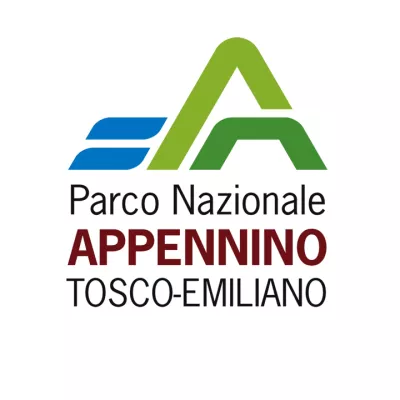General information
RDP Priority
- P4. Ecosystems management
RDP Focus Area
- 4A: Biodiversity restoration, preservation & enhancement
RDP Measure
- M08: Investments in forest areas
Beneficiary type
- Public authority / body
Summary
The national park authority of the Tuscany and Emilia Romagna regions (PNATE) clustered a series of small interventions into one RDP project to address the physical improvement of six attractive sites. The main aim of this project was to improve access and safety in the forest and along the water sites so that visitors, including children and people with mobility issues, could be safe and enjoy the forest more safely and stay longer in the park. This involved the renovation of existing trails, removing derelict and/or dangerous trees, fixing stone walls, paving areas around hostels, and installing ramps for people with mobility issues.
Results
The main results included:
- A total of 12 758 metres of trails restored or improved and 92 m2 of trails paved.
- Installed wooden ramps to improve accessibility for people with mobility issues.

Promoter
Parco Nazionale Appennino Tosco-Emiliano (PNATE)
Funding
Total budget: 140 771 (EUR)
EAFRD: 49 806 (EUR)
National/regional: 65 699 (EUR)
Private/own: 25 266 (EUR)
Ressources
Documents
Good Practice Report - Making small forest niche of a national park more accessible and attractive to visitors
(PDF – 504.49 Ko)
Context
The national park of the Tuscany and Emilia Romagna regions (PNATE) is a large area encompassing around 26 200 hectares in the centre of Italy. The park was established in 2001 and consists primarily of mixed forests (conifers and beeches) that represent its highest value in terms of biodiversity. PNATE attracts tourists each year, mostly due to its water resources (small waterfalls, creeks and small lakes) and fresh climate in the summer. However, some of the park locations, particularly those located closest to the town of Reggio Emilia, needed restoration and improvement to ease access and create spaces so that visitors (including people with mobility issues) could enjoy the forest better. A total of six sites were identified for improvement when the park authority applied for RDP funding in 2016. All the sites are located within the Natura 2000 designated area, each presenting specific and valuable natural features that needed to be taken into account for the restoration tasks.
Objectives
The main aim was to improve access and safety in the forest and along the water sites so that visitors, including children and people with mobility issues, could be safe and enjoy the forest more and stay longer in the park.
Activities
The main activities of the project involved:
- Site 1 - Ligonchio: restoring 1 000 meters of trail leading from the village of Ligancies to Mount Ligonchio (particularly to ensure a safe environment for school children from the village). This involved cutting 550 trees, improving the soil of the trail and installing an area for picnic.
- Site 2 - Lavacchiello waterfalls: installing 108 meters of palisades along the trail, cutting 30 damaged trees and paving a small area.
- Site 3 – Monte Acuto lake: consolidating 6 700 meters of trail, cutting 40 trees, and fixing a small stone wall.
- Site 4 – Rio Re hostel area: clearing the site of 100 trees at risk of falling, consolidating a stone wall and installing a ramp enabling access for people with mobility issues.
- Site 5 – Pratizzano hostel area: removing 50 trees, renovating 2 450 meters of trail, and installing a wooden ramp to enable access for people with mobility issues.
- Site 6 – Venusta hostel and Calamone lake: removing 200 trees near the lake shore, paving 40 sqm around the hostel, improving
1 800 m of trail and placing several weirs in creeks leading to the lake.
Main results
- Site 1: 1 000 metres trail restored and made safe leading from the village of Ligonchio to Mount Ligonchio; and 700 metres of trail renovated, 40 m2 paved and now with two picnic structures installed.
- Site 2: 108 metres of trail improved with palisades and trail made safe from the hamlet of Presa Alta to Lavacchiello waterfalls and an area of 12 m2 paved.
- Site 3: 6 700 metres of trail restored and the area outside the mountain hostel nearby Monte Acuto Lake improved and made safe.
- Site 4: Site of the Rio Re hostel renovated, made safe and accessible by a ramp for people with mobility issues.
- Site 5: 2 450 meters of trail renovated and the site of the Pratizzano hostel made safe and accessible by wooden ramp for people with mobility issues.
- Site 6: 1 800 meters of trail improved and lake shore site made safe, 40 m2 at the hostel site paved and water management of the creeks leading to the lake improved.
Key lessons
- In general, the main constraint for all the project sites was the limited time that was available for carrying out the works, because, in winter, the sites are usually covered in snow and, in summer, they are used by tourists.
- In addition, in the case of the Monte Acuto intervention (Site 3), access was extremely restricted, requiring the park authority to make the most of the natural materials that were available on site for the renovation works (stone, wood). Nevertheless, some key materials needed to be transported by helicopter because there was no other suitable access to the area.
“With projects like this, we improved our skills in implementing natural engineering techniques.”
National Park staff member
Nadia Fattori

